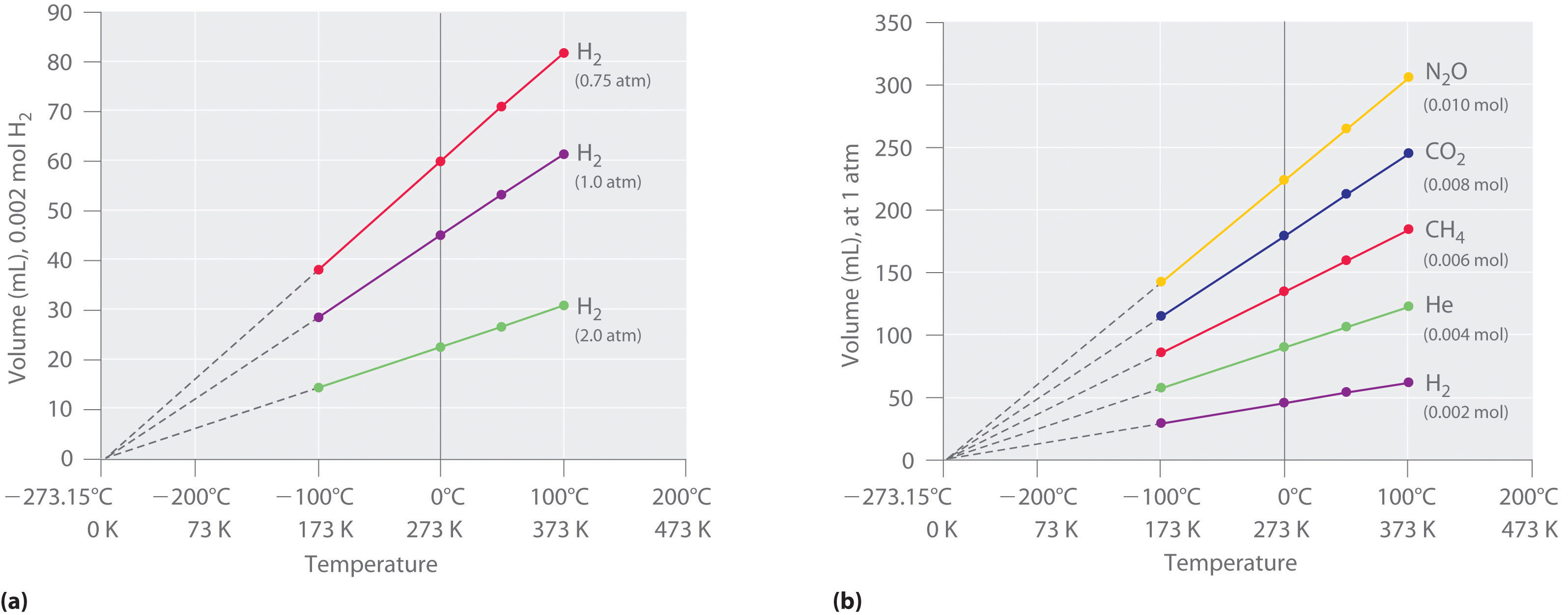
The constant k is called the Boltzmann constant in honor of Austrian physicist Ludwig Boltzmann (1844–1906) and has the value k = 1.38 × 10 −23 J/K. The ideal gas law states that PV = NkT, where P is the absolute pressure of a gas, V is the volume it occupies, N is the number of atoms and molecules in the gas, and T is its absolute temperature. In contrast, in liquids and solids, atoms and molecules are closer together and are quite sensitive to the forces between them.

The motion of atoms and molecules (at temperatures well above the boiling temperature) is fast, such that the gas occupies all of the accessible volume and the expansion of gases is rapid. Because atoms and molecules have large separations, forces between them can be ignored, except when they collide with each other during collisions. The answer lies in the large separation of atoms and molecules in gases, compared to their sizes, as illustrated in Figure 2. This raises the question as to why gases should all act in nearly the same way, when liquids and solids have widely varying expansion rates. In addition, you will note that most gases expand at the same rate, or have the same β. The large coefficients mean that gases expand and contract very rapidly with temperature changes. We can see evidence of this in Table 1 in Thermal Expansion of Solids and Liquids, where you will note that gases have the largest coefficients of volume expansion. We will primarily use the term “molecule” in discussing a gas because the term can also be applied to monatomic gases, such as helium.)

(Most gases, for example nitrogen, N 2, and oxygen, O 2, are composed of two or more atoms. In particular, we examine the characteristics of atoms and molecules that compose gases. In this section, we continue to explore the thermal behavior of gases.

As a result, the balloon experiences a buoyant force pushing it upward. The air inside this hot air balloon flying over Putrajaya, Malaysia, is hotter than the ambient air. Where the product of pressure and volume changes proportionally with absolute temperature.Figure 1. In this relation pressure(P), volume(V), and absolute temperature(T) are variables. Hint: The law of gas laws which contains terms of pressure(P) ,volume(V), absolute temperature(T) as variables, gives a relation between them.


 0 kommentar(er)
0 kommentar(er)
